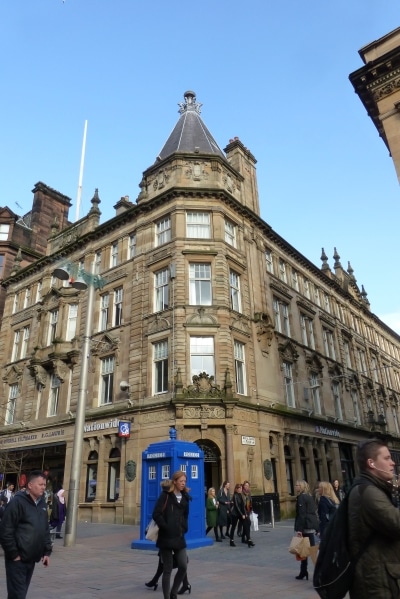If you like the hustle bustle of big cities, you’ll love Glasgow. But if you’re someone who prefers smaller cities with quaint tearooms, trendy cafés, and cozy music clubs, you’ll be equally charmed. Glasgow is Scotland’s largest city, though relatively compact and home to just 600,000 people, about the same as Boston or Seattle. For years it was derided as a gritty, working-class city but its proud residents, known as Glaswegians, ignored the taunts and got on with business. As a result it’s become the country’s economic powerhouse and one of the U.K.’s chief commercial centers. Glasgow—whose Gaelic name means “dear green place”—is one of Europe’s greenest cities, with acres of parklands and gardens. The River Clyde, where a third of the British Empire’s ship tonnage was once constructed, is almost pastoral now. Plied by yachts and barges, and graced with a long waterside promenade, it winds for miles beneath stylish steel bridges—notably the Glasgow Arc and the Bell’s Bridge—before reaching The Riverside Museum, where vintage cars, trucks, bicycles and motorcycles gleam under architect Zaha Hadid’s wave-like roof.
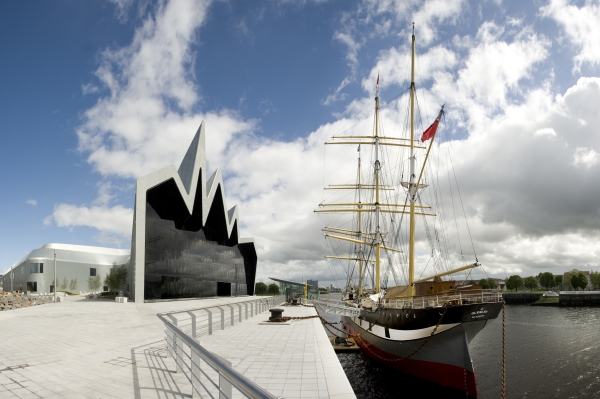
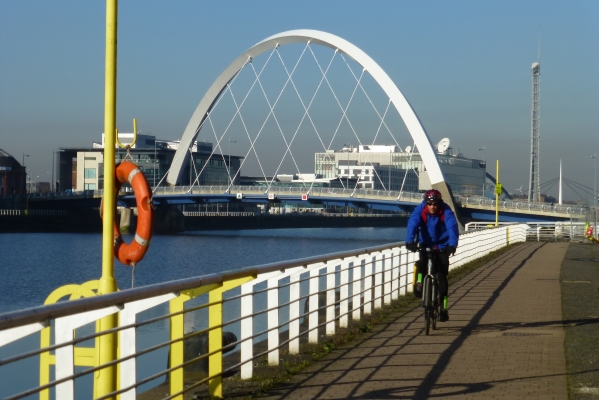
Like some unseen centrifugal force, Glasgow’s energy draws you to its heart, the centre city or “Mercantile City,” with loads of shops, restaurants and pubs. You can stroll for hours, pausing to hear a street band or guitarist, popping into shops to see creations by local artisans, stopping for tea in the ubiquitous tea rooms, and gazing at the ornate buildings. This same irrepressible energy drives Glasgow’s arts with the city recently emerging as one of Europe’s most vibrant cultural centers. In 1990 it became a European Capital of Culture, with over a hundred arts organizations, including the Scottish national symphony, opera and ballet. In 2008, it was designated a UNESCO City of Music. More than 130 musical performances are held weekly at venues like the Royal Concert Hall and the Old Fruitmarket, and at scores of rock and folk clubs. Each January, Celtic Connections, the world’s largest winter music festival, stages 2,000 performances. Musicians play year-round on nearly every street corner, many of the young students who flock there to study at one of the higher-education music institutions.
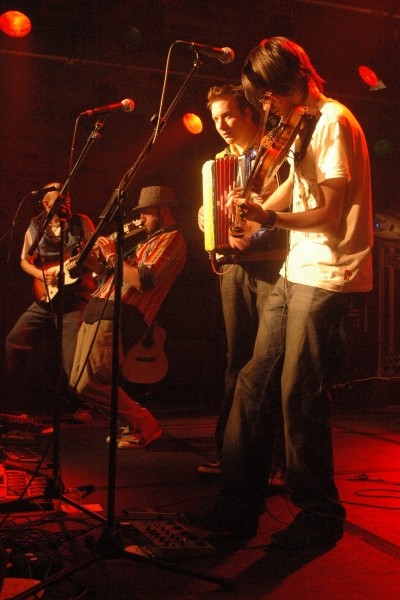
Architecture has long flourished here. In the 19th century, the city’s merchant princes hired architects like Alexander “Greek” Thomson to raise elaborate red and blond sandstone buildings to house their businesses. Adorned with statues, ornate friezes and pilasters, these temples of industry are nothing short of inspiring. Strollers craning their necks to gawk at them probably never heard of Mr. Thomson. But they’ve perhaps heard of Charles Rennie Mackintosh, the famous architect, craftsman and artist. On a private tour of his 1909 masterpiece, The Glasgow School of Art, a young Anglo-Kenyan student outlined the architect’s signature style. Near the entrance, the janitor’s closet beneath the main staircase resembles a Japanese pagoda. In whitewashed halls with barrel-vaulted ceilings, sunlight filters through windows casting narrow bands of shadows. In the library, which one critic called Mackintosh’s “fullest tribute to Japan,” tall rectangular columns, stretching to the ceiling, resemble a forest, illuminated by long hanging “skyscraper lights.” In May 2014, the building went up in flames. While it’s being painstakingly restored, tours of the exterior only are being given. When The Glasgow School of Art reopens, expect it to be every bit as impressive as the original.
In the centre city at The Lighthouse, which Mackintosh originally designed for the Glasgow Herald, see his one-of-a-kind furniture, then take the elevator up to his tower for splendid views. Steps away, at The Willow Tea Rooms, another Mackintosh design, sit in a high-backed chair while taking afternoon tea with scones slathered with strawberry jam and clotted cream. Choose from 25 varieties of teas as well as fresh-ground coffees. Upstairs is Mackintosh’s colorful Chinese Room with lattice-adorned walls.
Mackintosh DesignIn art, as in architecture, Glasgow similarly impresses and all institutions are free to the public. On Royal Exchange Square, the Gallery of Modern Art, or GoMA, exhibits contemporary works in a neoclassical building facing Wellington’s equestrian statue. At the Centre for Contemporary Arts, or CCA, see groundbreaking art, then enjoy a snack in the Saramago Café’s soaring atrium. In the East End, still a bit seedy in places but quickly being gentrified, Trongate 103, a six-story former warehouse, houses gallery spaces and studios for creative groups and visiting artists, often young and untried, who compete to work there. Downstairs is dimly lit Café Cossachok, billed as Scotland’s most authentic Russian restaurant.
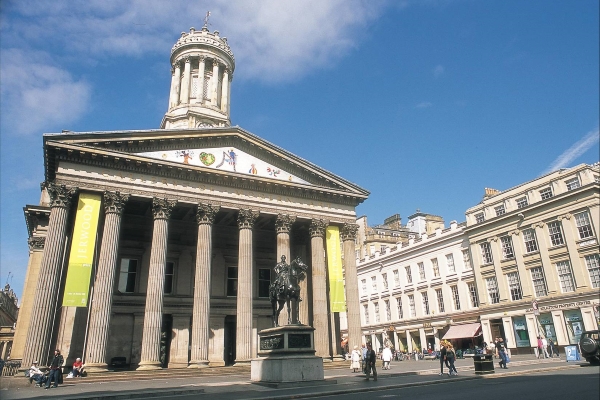
For more traditional art, head to the trendy West End, 10 minutes by bus or subway from the centre city, or a short ride on the red double-decker “Hop on, Hop off” bus. Opposite BrewDog, a popular brewpub, the red-sandstone Kelvingrove Art Gallery and Museum has 22 galleries and 8,000 objects, ranging from an enormous stuffed elephant to works by Old Dutch Masters and French Impressionists. Here, too, is an exhibit of furniture by Mackintosh and decorative pieces by his wife, Margaret Macdonald, and other members of their “Gang of Four.”
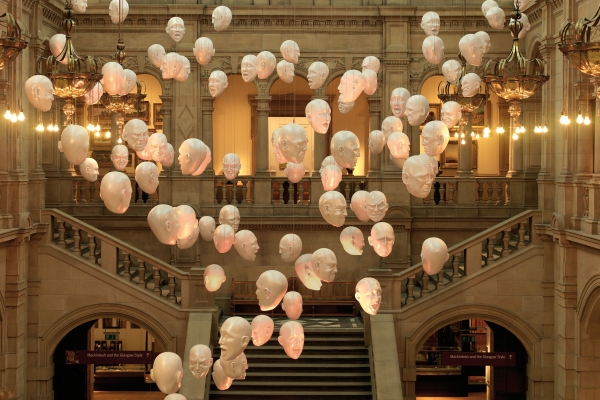
The nearby University of Glasgow, founded in 1451, is the fourth-oldest university in the English speaking world after Cambridge, Oxford and St. Andrews. Here, The Hunterian, Scotland’s oldest public museum, houses the world’s largest Mackintosh collection, including his architectural drawings, watercolors and landscape paintings. Incredibly, The Hunterian also holds the world’s largest collection of works by Massachusetts-born artist James McNeil Whistler. Steps away, The Mackintosh House features reassembled Art Deco interiors from 6 Florentine Terrace (now 78 Southpark Avenue), Mackintosh’s home from 1906 to 1914.
While in the hip West End, stroll Byres Road, Ashton Lane and the Great Western Road to discover one-of-a-kind boutiques and vintage clothing shops like Retro, Starry Starry Night, and The Glasgow Vintage Co. Quiet, leafy streets are lined with blond and red sandstone row houses, reminiscent of Brooklyn brownstones. Lunch at Cup or Delizique or perhaps pick up picnic provisions at West End cheesemonger George Mewes on Byres Road, then hunker down in Kelvingrove Park and watch the River Kelvin flow by.
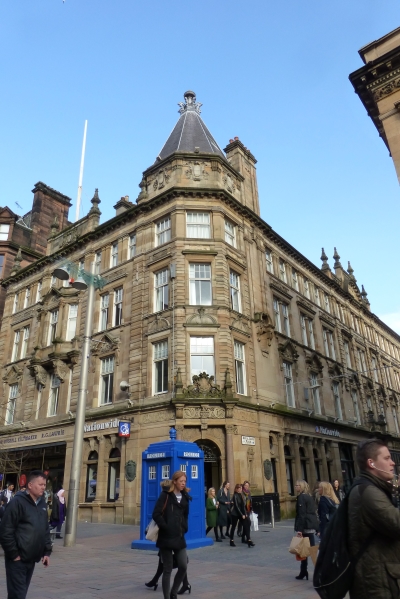
A short taxi or subway ride south across the River Clyde is the world-renowned Burrell Collection, ensconced in the leafy woodlands of Pollok Country Park, the city’s largest. Amassed by shipping magnate Sir William Burrell, the collection ranges from early Chinese pottery and Middle Eastern carpets to medieval tapestries and stained glass. The fine arts are represented by Rodin sculptures, Courbet landscapes and stunningly iridescent Degas pastels.
If seeing the sites builds up an appetite, there are numerous tea rooms and West End cafés that are perfect for lunch or tea. For elegant dining try the Bistro at One Devonshire Gardens in the tony Hotel du Vin. At Ubiquitous Chip, you can savor innovative Scottish fare like Shetland Island cod fillet and Galloway roe deer haunch in the upstairs brasserie. At the Buttery in centre city, enjoy homey seafood specialties like cullen skink (a creamy Scottish fish chowder), fish pie (with a crunchy blue-cheese crust), mussels in broth, and fresh salmon. In Glasgow’s East End, a short walk from Glasgow Cathedral, popular Café Gandolfi serves international dishes as well as Scottish specialties like the fairly tasty haggis, the national dish of Scotland, which is a savory pudding made from a sheep’s innards, mixed with onion, oatmeal and spices. For fine Indian fare, try Mother India in the West End.
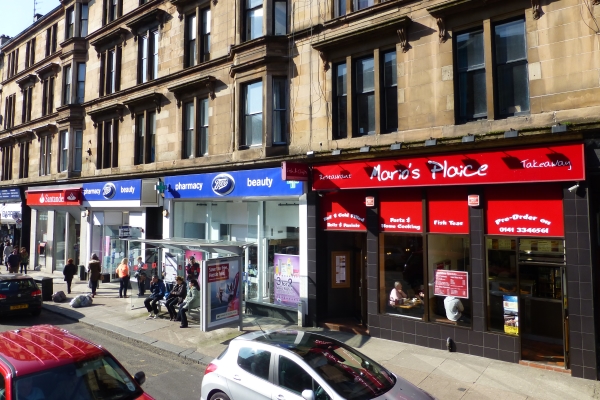
In many cities a nice dinner with a couple glasses of wine or beer, is typically an evening out but in energetic Glasgow it’s only the first course. Music is the main course, mostly rock and some folk, and often played in cozy haunts and dim basements. The Barrowlands, an East End institution with a flashing neon sign, has been going strong since the sixties. Performers have voted it the U.K.’s best rock venue and its past headliners include Bob Dylan, David Bowie, Elvis Costello and Depeche Mode. King Tut’s Wah Wah Hut, regularly named Britain’s best small venue, has been a rock ’n’ roll fixture for 25 years. Mono boasts a vegan/vegetarian restaurant, a microbrewery, a gourmet shop, a bar and world-famous, Monorail record shop. At Tchai-Ovna House of Tea in the West End, hear guitar, folk and avant-garde music while sipping any of 80 teas or puffing on a hookah. On Sauchiehall Street, you’ll find three top clubs: Nice N Sleazy, with live music, a jukebox and a DJ; BOX for live rock and posters of David Bowie and Jimi Hendrix, and O2 ABC in an Art Deco-style former cinema. Want more art and architecture with your music? Head to Stereo, with band posters and a vegetarian café/bar in a building designed by—who else?—Charles Rennie Mackintosh.
That fusion between music, art, architecture and the culinary arts is what makes Glasgow one of the world’s most exuberant cities. Gritty? Working-class? Detractors are either envious of Glasgow’s merits or completely unobservant. Spend a few days, or even a week here and like Glaswegians, you’ll shrug off that negative rap with a knowing smile and get on with business—the business of having a good time.
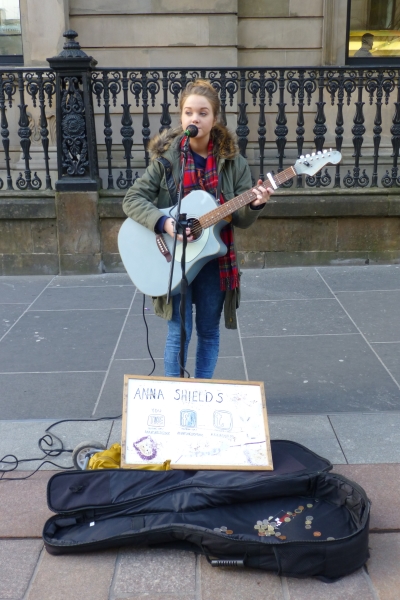
The country code for Scotland is 44.
Where to Stay:
Blythswood Square – In the centre city,perhaps Glasgow’s most luxurious five-star hotel, with 100 rooms, a spa, a restaurant, and several bars, including the Rally Bar, former starting point for the Monte Carlo Rally race. 11 Blythswood Sq., Glasgow G2 4AD, 141-248-8888. www.townhousecompany.com
Hotel du Vin – A five-star boutique hotel, with a bistro, bar, cigar shack and whisky room, in sandstone townhouses in the trendy West End. One Devonshire Gardens, Glasgow G12 0UX, 844-736-4256. www.hotelduvin.com
Hotel Indigo – Centrally located, this four-star charmer isone of Glasgow’s best small design hotels with a sunny dining room serving bountiful Scottish breakfasts. 75 Waterloo St., Glasgow G2 7DA, 141-226-7700. www.hotelindigoglasgow.com
Where to Eat:
The Willow Tea Rooms – Afternoon tea in Mackintosh’s Art Deco design. 217 Sauchiehall St., Glasgow G2 3EX; 141-332-0521; www.willowtearooms.co.uk
Cup Tea Lounge – Sumptuous soups, sandwiches and afternoon tea in a stunning Victorian landmark. 71 Renfield St., Glasgow G2 1 LP; 141-353-2959; www.cupglasgow.co.uk
Cup – Cup Tea Lounge’s sister café in the West End.311 Byres Rd., Glasgow G12 8UQ; 141-357-2525; www.cupglasgow.co.uk
Delizique – Where scones and smoked salmon meet hummus, marinated olives and sourdough pizza. 70-72 Hyndland St., Glasgow G11 5PT; 141-339- 2000; www.delizique.com
Bistro at One Devonshire Gardens – Fancy dining in the tony Hotel du Vin. 1 Devonshire Gardens, Glasgow G12 0UX; 141-339-2001; www.hotelduvin.com
Ubiquitous Chip – Scottish fare with flair, from Shetland cod fillet and Aberdeen beef to vegetarian haggis. 12 Ashton Ln, Glasgow G12 8SJ; 141-334-5007; www.ubiquitouschip.co.uk
Two Fat Ladies at the Buttery – Piscine comfort food like cullen skink, fish pie and salmon in a cozy tartan-adorned setting. 652-654 Argyle St., Glasgow G3 8UF; 141-221-8188; www.twofatladiesrestaurant.com
Café Gandolfi – A Glasgow institution for international and locally sourced Scottish specialties. 64 Albion St., Glasgow G1 1NY; 141-552-6813; www.cafegandolfi.com
Mother India – The place for Indian food in Glasgow. 28 Westminster Terrace. Glasgow G3 7RU; 141-221-1663; www.motherindia.co.uk
What to See and Do:
City Sightseeing Glasgow – The red double-decker “hop on, hop off” bus makes 24 stops at key landmarks. 153 Queen St., Glasgow G1 3BJ; 141-204-0444; www.citysightseeingglasgow.co.uk
The Riverside Museum – Along the Clyde, architect Zaha Hadid’s 2011 landmark housing vintage cars, motorcycles and other transportation displays.100 Pointhouse Pl., Glasgow G3 8RS; 141-287-2720; www.glasgowlife.org.uk/museums
The Glasgow School of Art – Architect Charles Rennie Mackintosh’s masterpiece.11 Dalhousie St., Glasgow G3 6RQ; 141-353-4526; www.gsa.ac.uk/tours
The Lighthouse – Scotland’s center for art and architecture designed by Mackintosh. 11 Mitchell Lane, Glasgow G1 3NU; 141-276-5365; www.thelighthouse.co.uk
Gallery of Modern Art (GoMA) – Contemporary art in a neoclassic landmark.Royal Exchange Square, Glasgow G1 3AH; 141-287-3050; www.glasgowlife.org.uk/museums
Centre for Contemporary Arts (CCA) – Contemporary art and a popular atrium café. 350 Sauchiehall St., Glasgow G2 3JD; 141-352-4900;
Trongate 103 – A hive of artist studios and exhibit spaces, plus an authentic Russian restaurant. Trongate 103, Glasgow G1 5HD; 141-276-8380; www.trongate103.com
Kelvingrove Art Gallery and Museum – See Mackintosh furniture and other fine art. Argyle St., Glasgow G3 8AG; 141-276-9599; www.glasgowlife.org.uk/museums
The Hunterian Museum – Featuring the world’s largest collections of Charles Rennie Mackintosh and James McNeil Whistler works. University of Glasgow, University Ave., Glasgow G12 8QQ; 141-330-4221; www.gla.ac.uk/hunterian
The Burrell Collection – World-renowned art across the River Clyde in Pollok Country Park. 2060 Polloshaws Rd., Glasgow G43 1AT; 141-287-2550; www.glasgowlife.org.uk/museums
The Barrowlands – A rock institution with top headliners and a flashing neon sign. 244 Gallowgate, Glasgow G4 0TT; 141-552-4601;
King Tut’s Wah Wah Hut – Ear-shattering rock ‘n’ roll in a storied basement. 272 a St. Vincent’s St., Glasgow G2 5RL; 141-221-5279; www.kingtuts.co.uk
Mono – Discover a vegan-vegetarian restaurant, microbrewery, gourmet shop and world-renowned Monorail record shop. 12 Kings Court, King St., Glasgow G1 5RB; 141-553-2400; www.monocafebar.com
Tchai-Ovna House of Tea – Kick back with tea, a hookah and folk music. 42 Otago Ln, Glasgow G12 8PB; 141-357-4524; www.tchaiovna.com
Nice N Sleazy – Enjoy live music, a jukebox and a DJ—plus inexpensive food and drink. 421 Sauchiehall St., Glasgow G2 3LG; 141-333-0900; www.nicensleazy.com
BOX – Live rock six days a week! 431 Sauchiehall St., Glasgow G2 3LG; 141-332-5431; http://boxglasgow.co.uk
O2 ABC – Popular club in an Art Deco building. 300 Sauchiehall St., Glasgow G2 3JA; 141-332-2232; www.o2abcglasgow.co.uk
Stereo – Hip tunes and vegetarian fare in a Mackintosh-designed building. 22-28 Renfield Ln, Glasgow G2 5AR; 141-222-2254; www.stereocafebar.com

